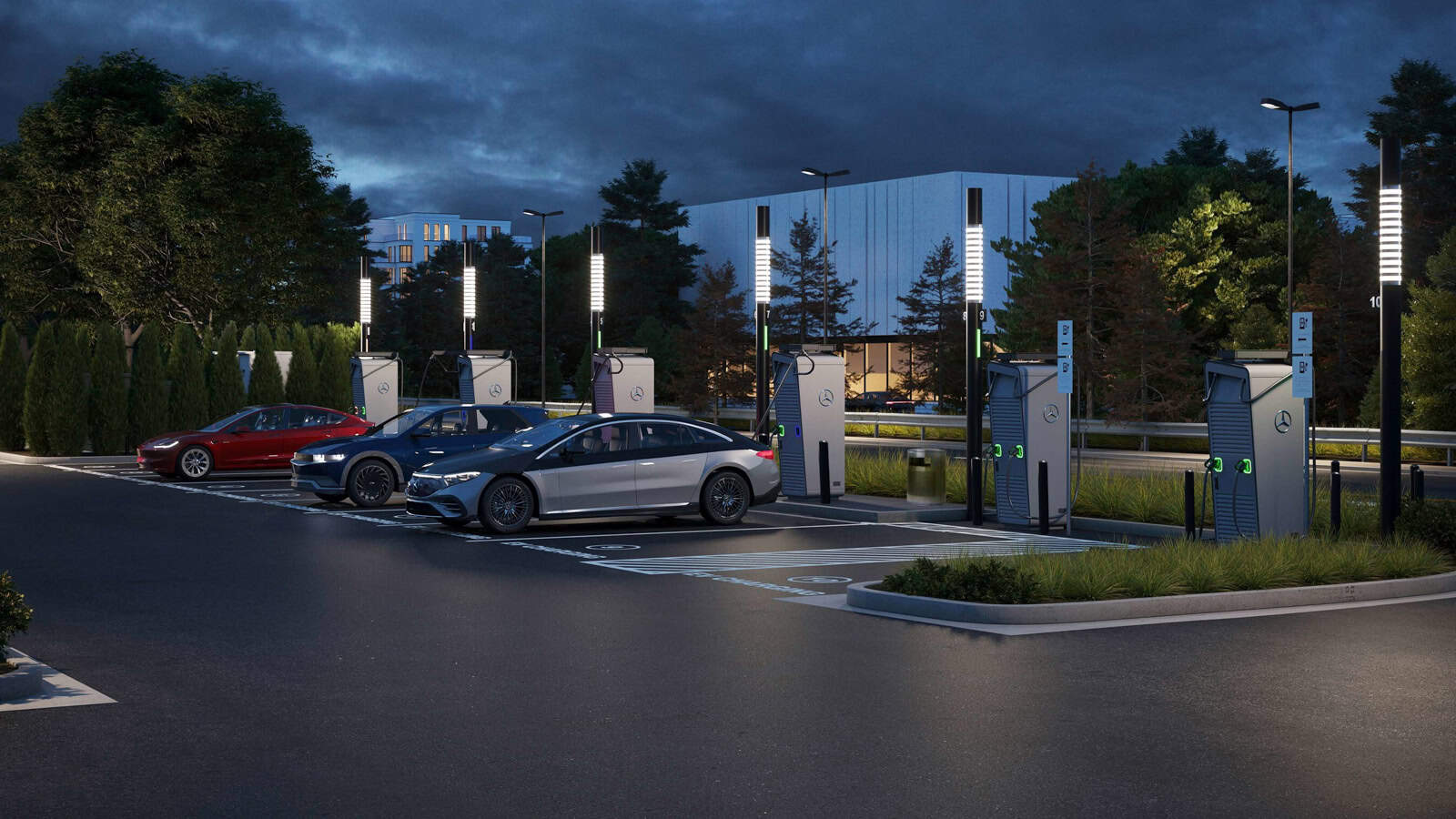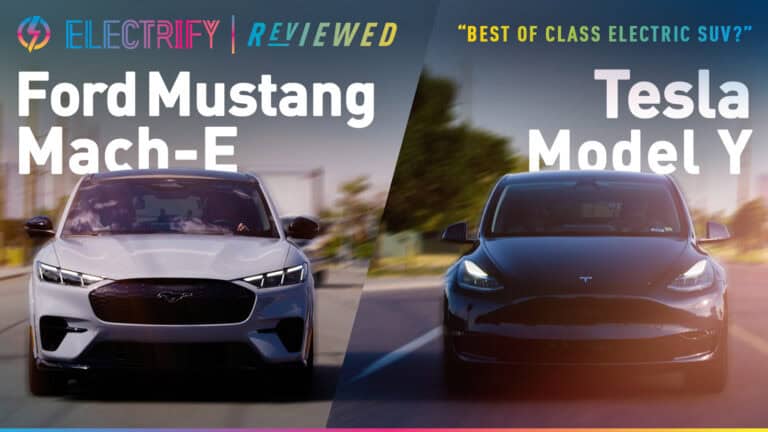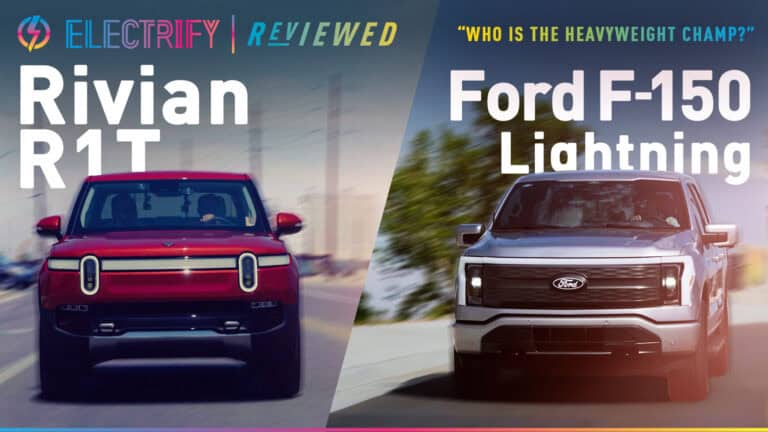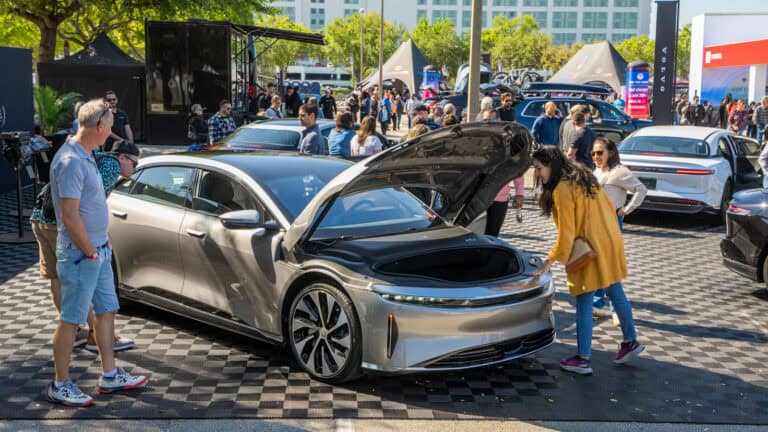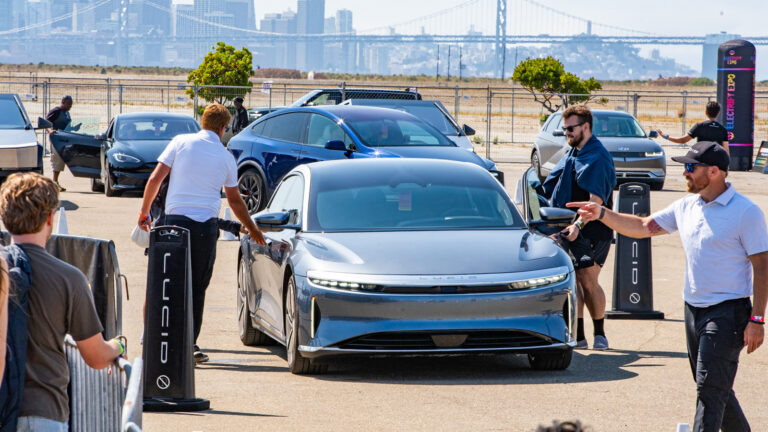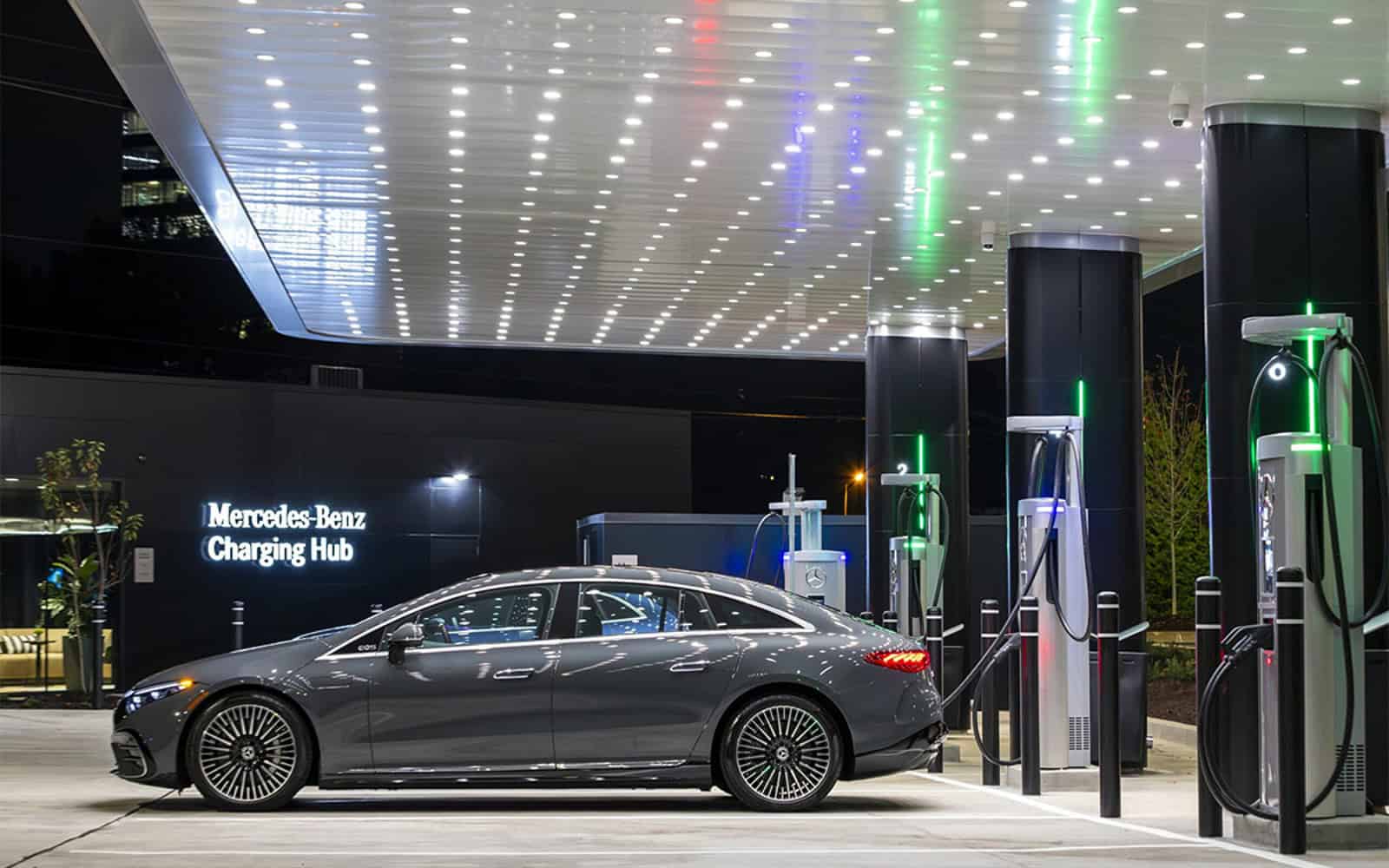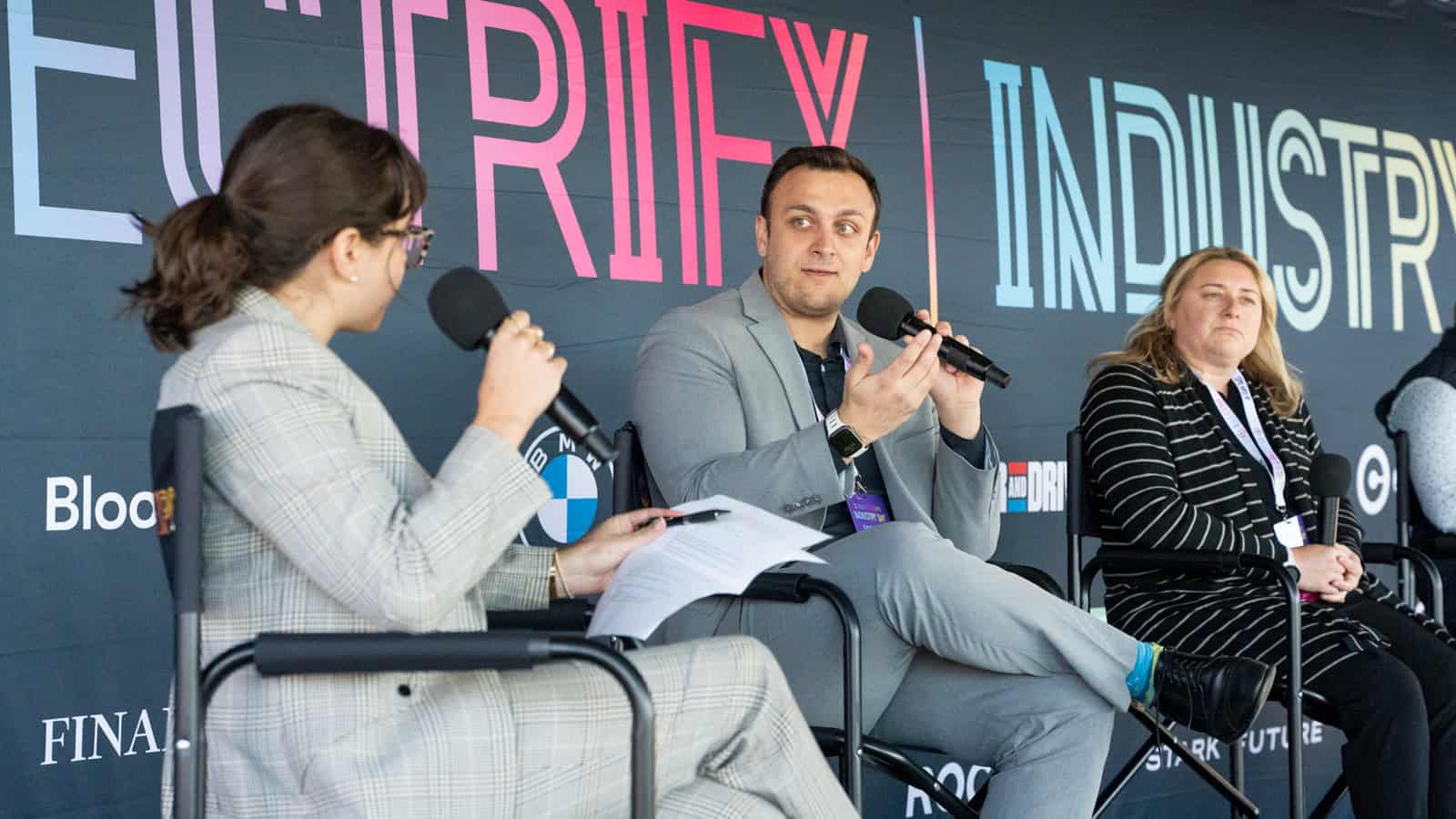- Mercedes-Benz HPC is putting ultra-fast chargers at shopping centers you already visit, open to all EV brands.
- Over 500 charging stalls with 400 kW speeds are coming to 50 retail centers starting in 2026.
- No subscription. No exclusivity. Just fast, open-access charging where people already go.
ADVERTISEMENT
Ever pulled into a shopping center only to realize your EV has half a charge, and no charger in sight?
Federal Realty just secured an exclusive agreement with Mercedes-Benz High-Power Charging (HPC) to roll out over 500 ultra-fast EV charging stalls across 50 of their high-traffic, open-air shopping centers.
Locations like Camelback Colonnade in Phoenix, Lawrence Park Shopping Center in Pennsylvania, and Shops at Pembroke Gardens in Florida are among the first included in the rollout, with many others planned across the country.

Each location will feature chargers capable of 400 kW speeds, and they’re open to all EV brands. Whether you drive a Tesla, a Rivian, or a Ford F-150 Lightning, you’re welcome to plug in.
The first wave of installations goes live in 2026, placing fast charging where people already spend time. This is practical, scalable, and fully aligned with how drivers live and shop today.
“We view this partnership as a strategic inflection point for EV infrastructure deployment in retail real estate,” said Don Wood, President & Chief Executive Officer of Federal Realty. “By aligning with Mercedes-Benz, we’re introducing a forward-looking amenity that enhances the customer experience and reinforces the long-term strength of our portfolio. The structure of the deal is just as innovative as its scale, designed to create lasting value for our business and our communities.”
“Scaling reliable, high-speed EV charging requires more than just technology—it takes partners who understand place, quality, and the customer journey,” said Andrew Cornelia, President & Chief Executive Officer of Mercedes-Benz HPC North America. “Federal Realty’s properties are destinations in their own right, and this collaboration enables us to deliver a seamless charging experience at some of the most desirable locations in the country.”
ADVERTISEMENT
You might be wondering, is anyone else doing this kind of large-scale charging deployment? Definitely. ChargePoint joined forces with Eaton to simplify EV infrastructure across both North America and Europe. GM is also teaming up with ChargePoint to roll out up to 500 charging stations across the U.S., and they’re including Tesla-style NACS connectors to widen compatibility. Meanwhile, BP Pulse is bringing 400 kW chargers to Waffle House diners across the South and Southwest, with six units per location.
All of this is happening just as Federal Realty’s own rollout begins. The retail, auto, and energy industries are clearly in sync, each finding ways to integrate charging where people already spend their time.
Federal Realty isn’t going the piecemeal route. Instead of testing one location at a time, they’re rolling out chargers across a full portfolio. The plan starts with 20 locations in 2026, followed by 30 more shortly after.
It’s a smart approach that blends retail convenience with infrastructure scale, streamlined, consistent, and built into places people already frequent. Mercedes-Benz HPC, for its part, already has over 400 chargers operating across 14 states, with another 2,000 in the pipeline. So yes, the groundwork is solid.
ADVERTISEMENT
Let’s call it what it is… smart business with ripple effects. Add chargers where people already spend time, and you’re likely to see more foot traffic, less stress for EV drivers, longer dwell times, and yes, stronger returns.
Federal Realty isn’t new to this kind of thinking either. The company has increased its dividend every quarter for 57 years, longer than anyone else in the REIT sector, and this infrastructure rollout lines up perfectly with that long-term value play.
That kind of large-scale infrastructure isn’t exactly a low-cost weekend project, but it’s an investment with long-term returns baked in. While competitors like Electrify America, EVgo, and Ionna are working quickly (Ionna alone plans 30,000 high-power chargers across North America), this approach leans into real-world convenience. By placing chargers where people already shop, eat, and run errands, this strategy skips the guesswork and plugs directly into everyday life.
There are 4.8 million EVs in the U.S., according to Experian, just 1.6 percent of vehicles, but EV owners want convenience, and fast chargers help close that gap.
ADVERTISEMENT

IMAGES: FEDERAL REALTY INVESTMENT TRUST
FTC: We use income-earning auto affiliate links. Learn more.


